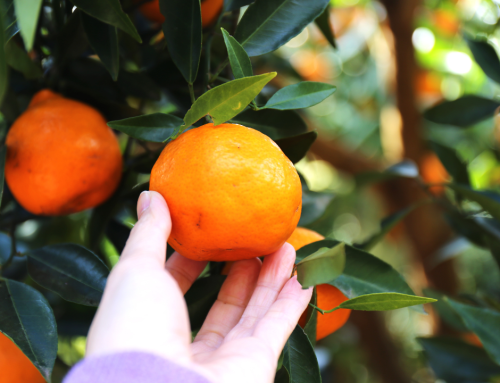Autumn control
Unmanaged fruit must be controlled through autumn, as it is the root cause of fruit fly population explosions in spring. Queensland fruit fly are desperate to find fruit to lay the last of their season’s eggs into in April before they switch to winter survival mode (seeking protein, sugar and shelter). Young fruit fly reared on these fruit will emerge as adults in late April/ early May and look for food and shelter to survive winter.
If all susceptible fruit could be removed from the landscape at this time, there would be little chance of fruit fly surviving the winter in great numbers. Even just a few odd fruit growing along the roadside act as reservoirs for the spring emergence of fruit fly. If you know of roadside fruit trees, report them to your local council.
Post-harvest hygiene
Post-harvest hygiene options include:
- Slash or mulch
- Rake out from under trees and slash or mulch
- Cover with impermeable sheeting and fumigate with chemical approved for this purpose
- Deep bury – cover must be more than 30cm deep and be packed down (clay soils are generally not suitable due to deep cracking if they dry out)
- Apply approved sprays as per advice from your agronomist
- Feed to animals, run stock to clean up orchard floor
- Burn (use of accelerant may need approval)
Fruit fly on the move
Numbers of Queensland fruit fly trapped in urban areas of the Goulburn Murray Valley are on their way down but are increasing in peri-urban and rural areas. The likely cause of this cross-over is that urban fruit are nearly finished (have been harvested or eaten by birds) and large volumes of commercial or larger-scale crops are now ripe in peri-urban and rural areas, attracting fruit fly from urban areas, through peri-urban locations and into commercial crops.
Urban hot spots
- Merrigum
- Nagambie
- Katamatite
- Katunga
- Numurkah
- Euroa
- Ardmona
Backyard fruit
- Remove fruiting plant
- Remove fruit and cook, eat, process
- Remove and destroy fruit (solarise, heat, freeze, burn, drown) – don’t compost
- Net trees, single tree, branch or individual trusses or fruit




